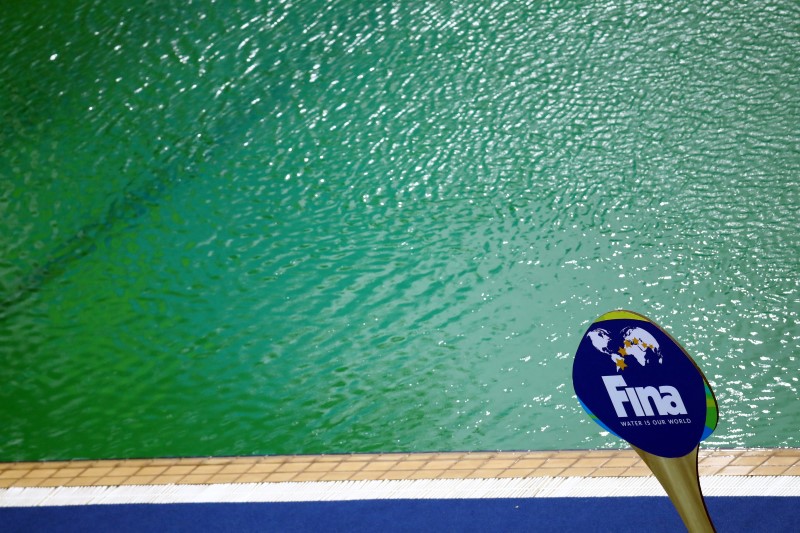By Joshua Schneyer
RIO DE JANEIRO (Reuters) - Concerns over water quality at the Olympics have been swirling for months for sailors and rowers, but this week they moved into swimming pools, in the latest embarrassment for Games organisers.
Untreated sewage, the presence of dangerous bacteria, and garbage floating in Rio’s Guanabara Bay and lagoon waters have long unsettled many water-sport competitors at the Games.
But few expected the diving pool at the Maria Lenk aquatic center to turn a mysterious, translucent green on Wednesday.
World swimming governing body FINA said the colour was the result of a failure by Games organisers to sufficiently treat the water, after tanks at the pools had run out of pool chemicals.
The resulting abnormal pH levels in the diving and water polo pool next door would be quickly remedied, organisers said, adding that the water posed no health risk.
Their solution - adding more chlorine, a chemical that kills algae and helps keep pool waters blue - kept the complaints rolling in.
After the U.S. men’s water polo team beat France on Wednesday, U.S. captain Tony Azevedo emerged from the pool red-eyed, bemoaning the pool water that was stinging players’ eyes.
"What's ridiculous is not the green water. I've played in plenty of pools with green water. The problem is they put way too much chlorine in,” Azevedo told reporters. “I could barely open my eyes for the final quarter.”
Azevedo added: “This is the Olympic Games and they are putting so much chlorine in the water that people can't see. You can't have that."
According to water treatment experts, such problems are easily avoidable with proper maintenance by pool-keepers.
“Now the water quality problems are moving to the pool," said Jose Tundisi, a prominent Brazilian water resources researcher and professor at Feevale University in Brazil’s southern Rio Grande do Sul State, who has been outspoken about the dangerous pollution in Rio's bay.
“All you have to do is maintain the pools correctly, but it sounds like they are now slamming them with chlorine to get rid of the green colour.”
Pool water quality is among a host of issues organizers have faced since the Games opened on Aug. 5, ranging from long security lines for spectators, to partially empty stadiums, and a stray bullet at the Olympic equestrian centre.
For one expert, the response to the pool problem smacked of mismanagement.
“If this was a pool under my management it would have to be closed to the public to rectify the problem because these chemicals are so harsh on bathers,” said Nate Hernandez, Director of Aquatic Solutions at VivoAquatics in Las Vegas, Nevada.
After more chemicals were added, Olympic organisers said the pool problems had been rectified and the water posed no health risk.
“We could have improved the water faster by using more chemicals but we don't want to have any risk to health of athletes,” said Mario Andrada, communications director at Rio’s Organizing Committee.
Christopher Ramsey, the General Secretary at USA Water Polo, told Reuters that FINA and athletes had every right to be concerned.
“FINA is certainly frustrated that the organizing committee has missed the mark in operating the facilities,” Ramsey said. “We would rather play in benign green water than over-chlorinated water that makes it difficult for the athletes to perform at their best.”
By Thursday, players who competed in the water polo pool found it was not as chlorinated as the previous day.
“Checked with our team today, no reports of any chlorine complaints. Perhaps it has been adjusted since yesterday,” said Greg Mescall, communications director for U.S. water polo.
The U.S. women's water polo team, favorites for the gold medal, prevailed over China 12-4 in a morning match.
No water quality issues have been reported at swimming events, which are held at a separate pool.
